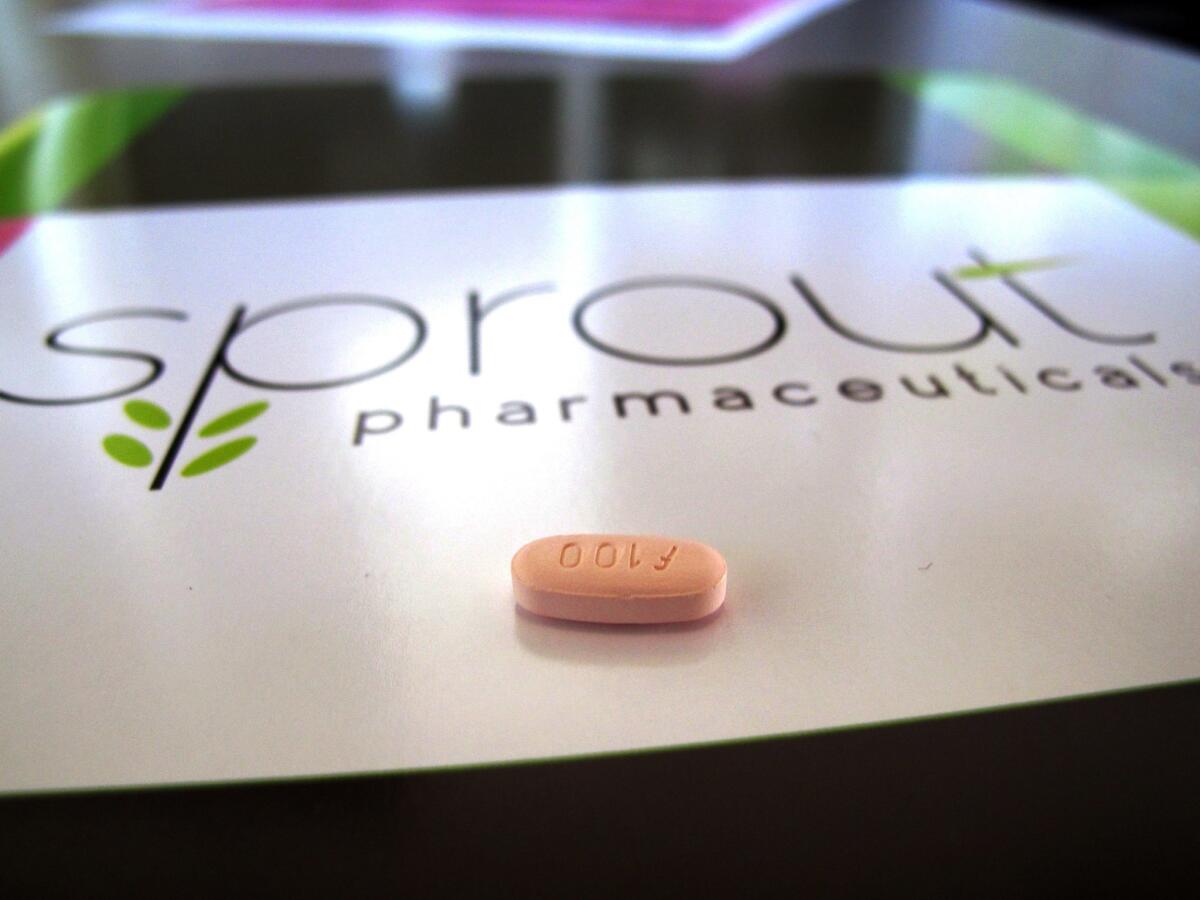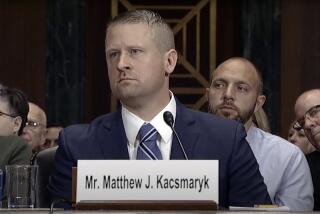Editorial: Fate of ‘pink Viagra’ should be determined by science, not politics

A tablet of flibanserin sits on a brochure for Sprout Pharmaceuticals in the company’s Raleigh, N.C. headquarters in 2013.
- Share via
There’s nothing feminist about a drug that isn’t very effective and can have negative side effects in the women who take it. That’s something for the U.S. Food and Drug Administration to keep in mind as it reconsiders the so-called little pink pill or women’s Viagra — a pharmaceutical intended to increase sexual desire in premenopausal women troubled by low libido.
The FDA already has rejected the experimental drug flibanserin twice, on the grounds that its downsides outweigh its benefits. Now Sprout Pharmaceuticals is back with more research and a re-analysis of previous data showing stronger outcomes. According to an FDA analysis, the drug provides better results than a placebo — but not by much. Overall, the drug led women to have one more satisfying sexual experience per month than they had without it. A few women’s groups have called on the agency to approve flibanserin this time, saying it’s unfair that there is no drug for women’s sexual-desire problems, while men have a choice of formulations for erectile dysfunction, including that famous blue pill, Viagra. One campaign on behalf of the drug is called “Even the Score.” Other women’s health groups say the drug shouldn’t be approved. A joint FDA panel is meeting on the issue Thursday.
The list of flibanserin’s common side effects includes low blood pressure and fainting, as well as headaches, nausea, dizziness and fatigue. Its supporters point out that Viagra has a much longer list of side effects. True, but drug approval is a balancing act between benefits and risks. Viagra is a far more effective drug than flibanserin. It also is taken only when needed; flibanserin must be taken every day, indefinitely, for women to reap any benefit, increasing the danger of the side effects.
Many in the medical establishment object to the very idea of a drug for low desire in premenopausal women, saying that, unlike with erectile dysfunction in men, it is primarily caused by psychological problems and relationship issues. The FDA takes a different, more reasonable view: If there is a safe pharmaceutical solution to this distressing problem, great. It’s far from clear, though, that flibanserin fits the bill.
The most disturbing aspect of the pink-pill debate is the attempt to make this decision political rather than scientific. Whether a drug treats people of a particular age, gender or ethnicity, it must provide substantially more benefit than risk. That is the only “score” the FDA advisory panel should be toting up in reconsidering flibanserin.
Follow the Opinion section on Twitter @latimesopinion and Facebook
More to Read
A cure for the common opinion
Get thought-provoking perspectives with our weekly newsletter.
You may occasionally receive promotional content from the Los Angeles Times.









